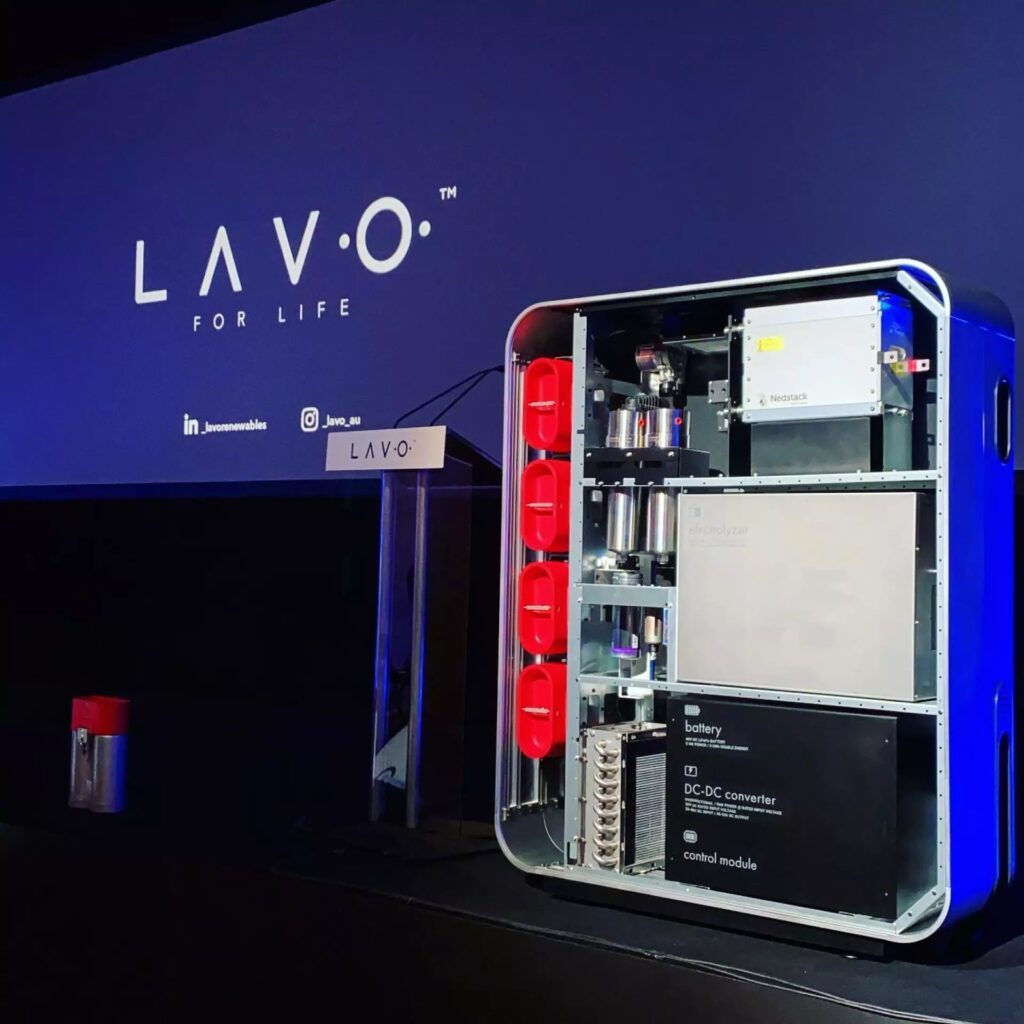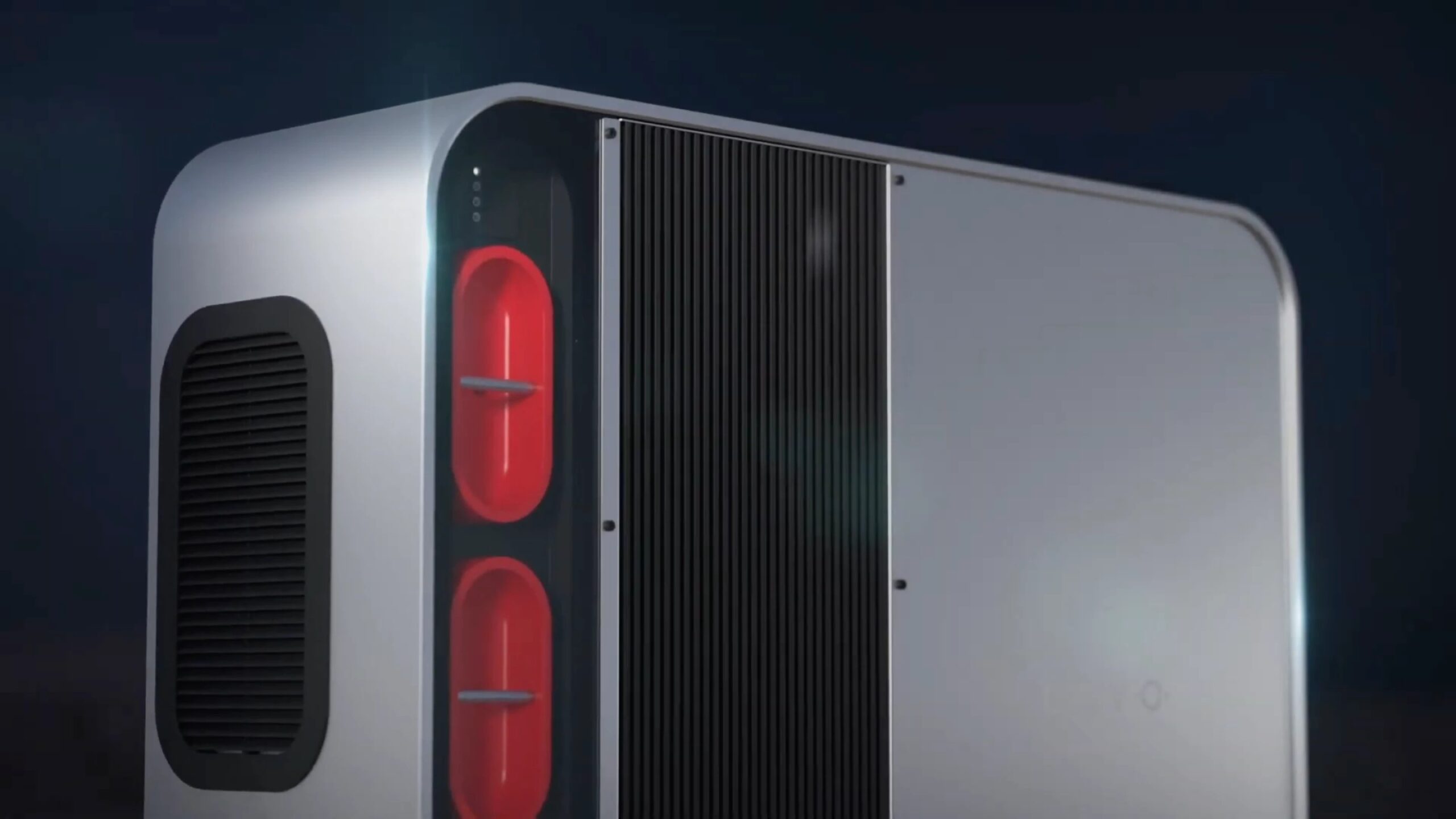Those who use solar panels and really want to disconnect from the grid must be able to generate energy even without the sun, and keep what is not needed. This is usually done with a domestic lithium battery - Tesla's Powerwall 2 is one example.
Now the Australian company I wash he built a kind of nice big cupboard that can store excess energy in the form of hydrogen. You got it right: a hydrogen storage system, the first in the world.

Lavo's storage system is called Green Energy Storage. It measures 1.68m x 1.24m x 40 cm (66 x 49 x 15,7 inches) and weighs a whopping 324 kg (714 lbs). It's very unlikely, let's put it that way, that thieves will steal this hydrogen home battery.
How does the hydrogen storage system work?
There isn't too much to do. It connects to a solar inverter (must be a hybrid) and to the water network (via a purifier), and that's it.
The home hydrogen battery uses excess solar energy to electrolyze water, releasing oxygen and storing the hydrogen in a patented metal hydride “sponge” at a pressure of 30 bar, or 435 psi.
It conserves about 40 kilowatt hours of energy, three times more than the current Powerwall 2, the Tesla storage system: enough to run an average home for two days. It can not rain forever!
When this energy is needed, the Lavo storage system uses a fuel cell to provide energy to the home, adding a small 5 kWh lithium backup battery for instant response. There's Wi-Fi connectivity and a phone app for monitoring and control, and businesses with higher power needs can run several in parallel. You can put a domestic hydrogen battery next to another, and form a small “intelligent virtual power plant”.
How much?

Currently, it has been said, this system conserves three times as much energy as a Tesla Powerwall 2 storage system. However, it costs more than three times as much (around 25.000 euros). When the company distributes this domestic hydrogen battery internationally, he says, the price should fall below 20.000 euros. We are talking about the last quarter of 2022.
Advantages of the Lavo storage system compared to Tesla's Powerwall 2?
First of all, the duration: compared to a lithium storage system, the hydrogen one it could reach 30 years of life (against, perhaps, 15 years). The most important point, however, is that there would be no toxic substances to dispose of. All nice, right? Of course. I'll also show you the Lavo commercial, if your heart holds up for so much marketing. After the video, continue as we do a little reality check.
And the disadvantages?
Safety first: It's certainly a matter of debate. Lavo says a potential leak dissipates so quickly that there is little chance of a fire or explosion. He says hydrogen is "inherently no more dangerous than other conventional fuels such as gasoline or natural gas." I read all these beautiful things, but I fear the same: What happens in the "rare case" that a fire reaches this plant? A burning issue, or even an explosive one.
Then there is efficiency. Batteries store and release energy with minimal losses. With a domestic lithium storage system, more than 90% will be recovered for every kilowatt hour generated by solar panels on a roof. But the process of generating hydrogen by electrolysis with a proton exchange membrane is efficient only 80% about. With a domestic hydrogen battery today you immediately lose 20% of the solar energy collected. In the other direction, then, to convert the hydrogen back into energy you lose about half of what you have stored. A bloodbath.
In summary: it no longer takes energy just to “fill” it. When you recover energy, the 40 kWh hydrogen storage system is practically equivalent to a 20 kWh lithium home system.
As a final blow, the maximum continuous power of the system is 5 kW, presumably limited by the efficiency of the fuel cell. Single split system air conditioning systems that draw more than 7 kW exist and are not particularly rare. 5 kW of continuous power will be a problem; you will need to keep the connection to the network active, there are no Saints.
We give time to time
The problems seem to outnumber the advantages, but we are at the beginning. It's not hard to imagine that sooner or later a hydrogen storage system might make sense at some point down the track.


